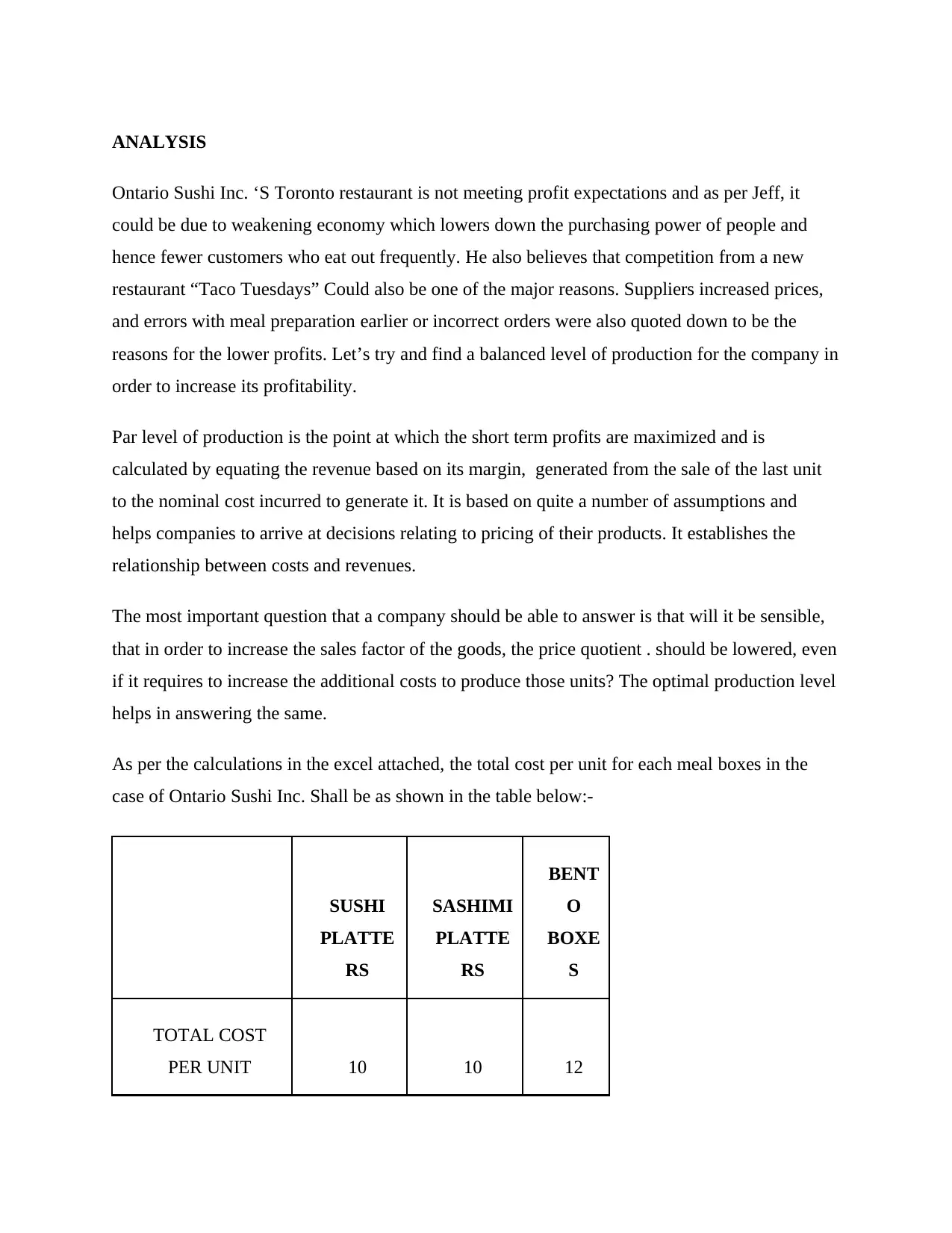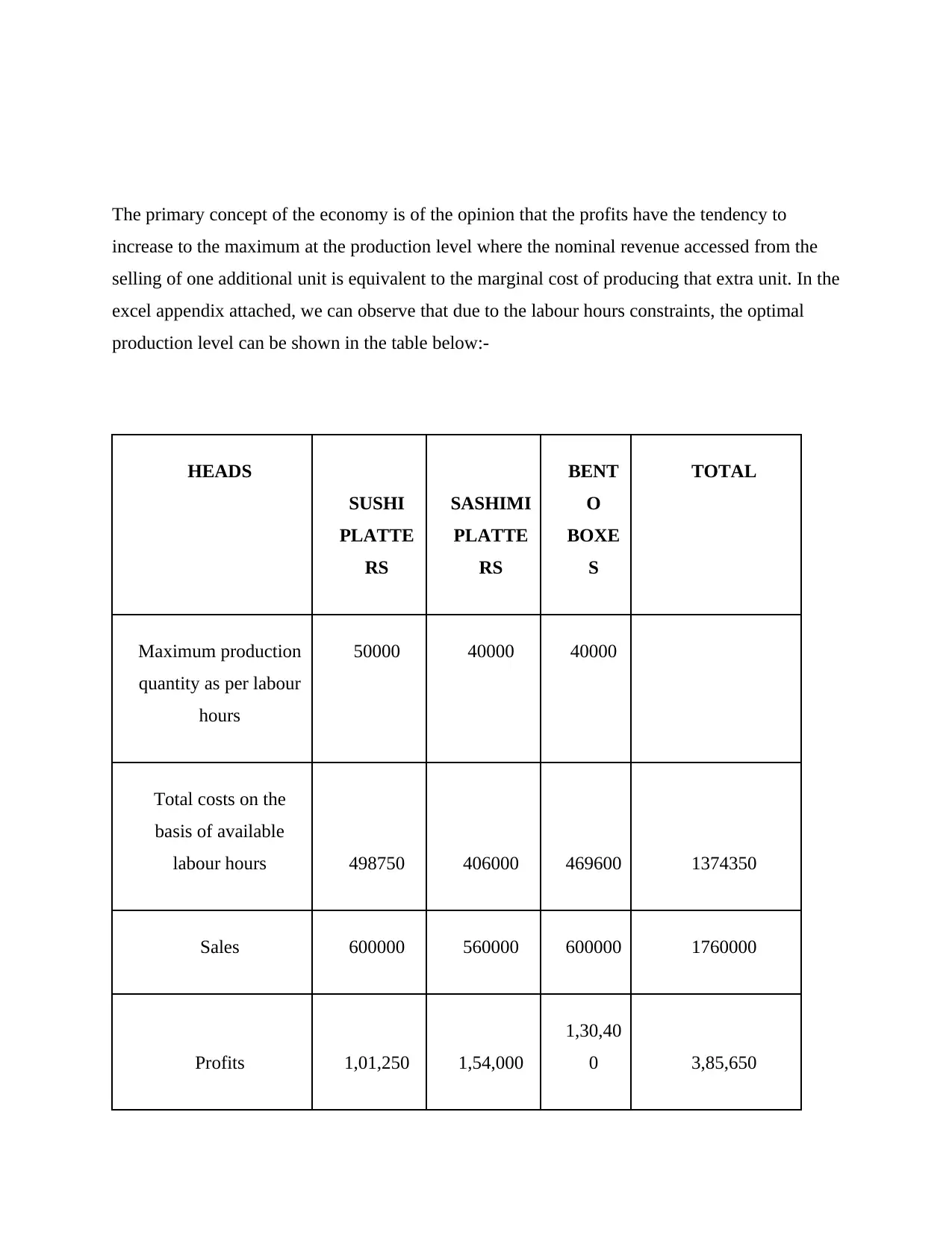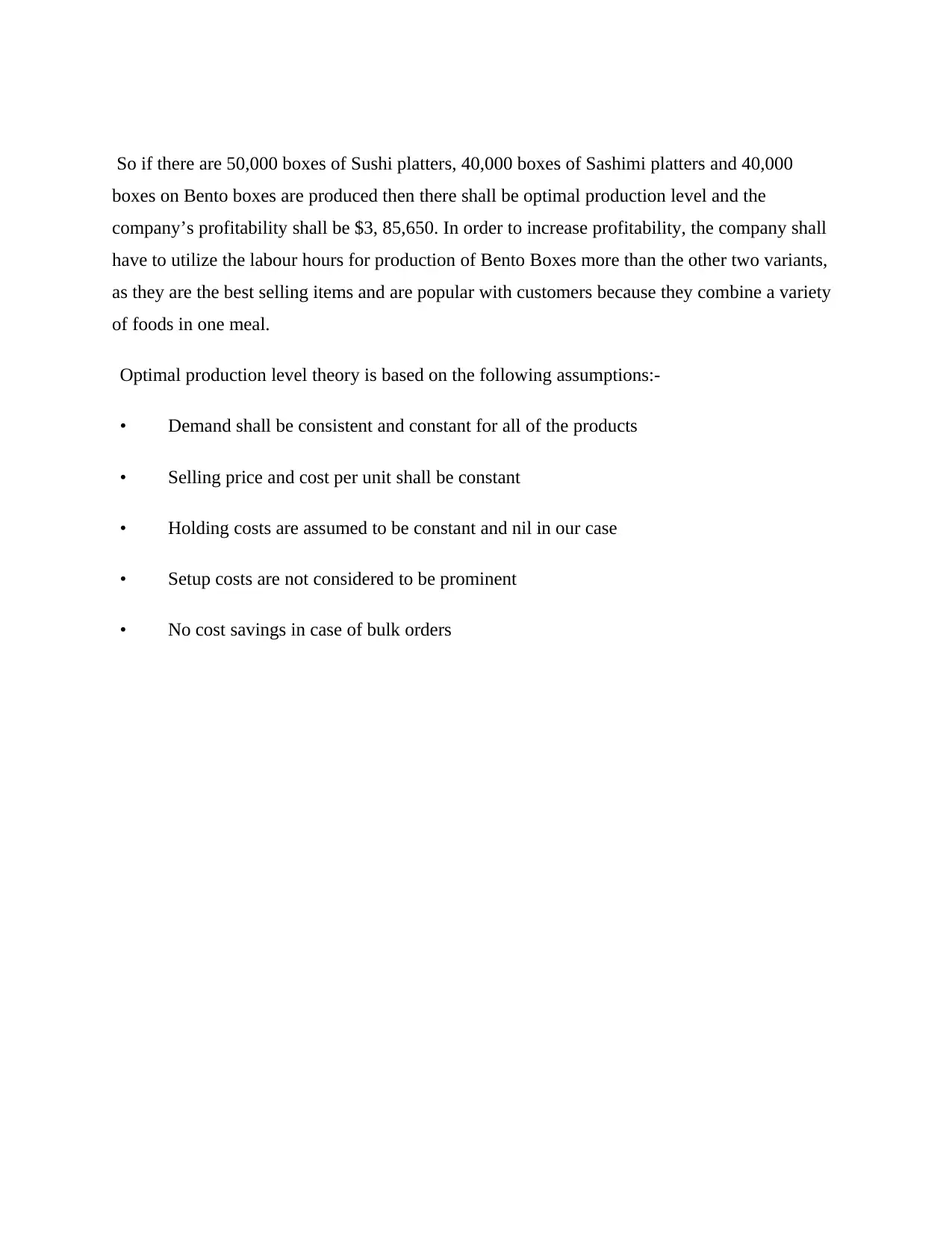Case Study: Ontario Sushi Inc. Profitability and Production Analysis
VerifiedAdded on 2022/11/09
|3
|588
|452
Case Study
AI Summary
This case study analyzes the financial performance of Ontario Sushi Inc. (OSI), a Japanese restaurant chain in Toronto. The analysis focuses on the declining profitability of OSI and explores potential causes, including a weakening economy, competition, increased supplier costs, and operational errors. The study calculates the optimal production level for various sushi platters, sashimi platters, and bento boxes to maximize profits, considering labor hour constraints. The analysis determines that producing 50,000 sushi platters, 40,000 sashimi platters, and 40,000 bento boxes results in the optimal production level, generating a profit of $385,650. The study also highlights the importance of utilizing labor hours for bento boxes, which are popular with customers. The optimal production level theory is based on assumptions of consistent demand, constant selling prices, and constant holding costs. The case study provides valuable insights into cost analysis, production optimization, and financial decision-making within the restaurant industry.
1 out of 3




![[object Object]](/_next/static/media/star-bottom.7253800d.svg)